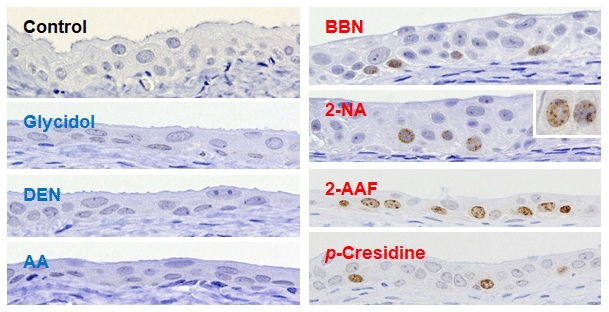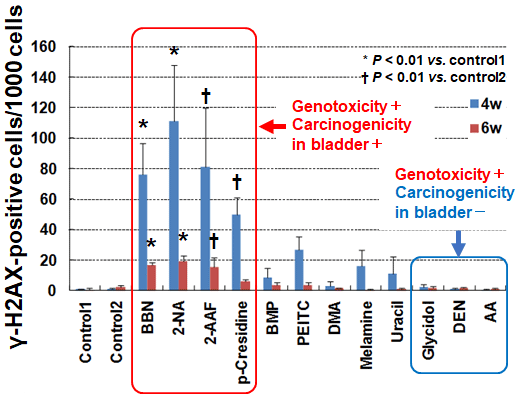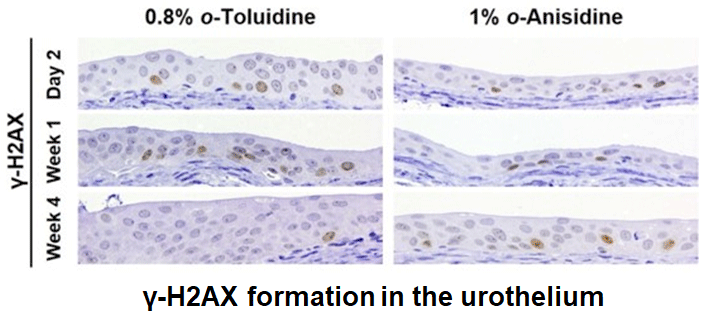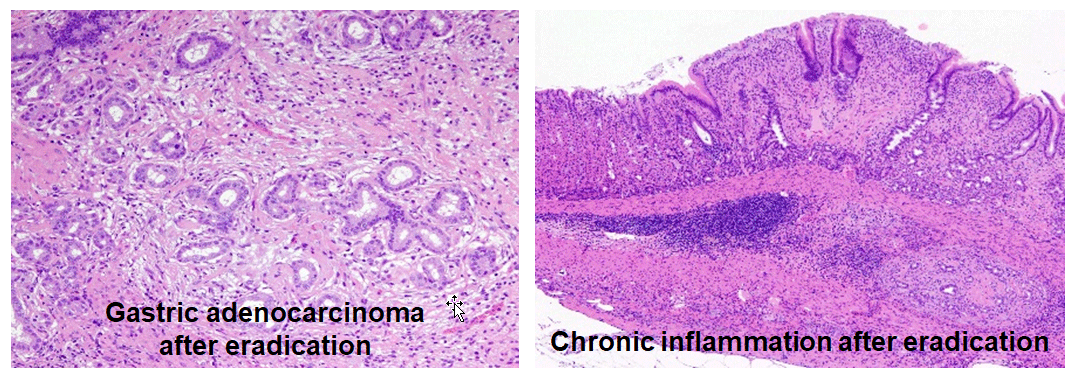RESEARCH (Section2)
1. Early detection of genotoxic urinary bladder carcinogens
We examined formation of γ-H2AX, a DNA damage marker, in the urinary bladder of rats treated with various chemicals.


γ-H2AX formation was significantly increased by all 4 genotoxic bladder carcinogens.
→ γ-H2AX may be a potential biomarker for the early detection of genotoxic bladder carcinogens.
(J Toxicol Pathol, 26:215-21, 2013; Toxicol Sci, 148:400-8, 2015 J Appl Toxicol, 38:537-43, 2018)
2. Mechanisms of bladder injury induced by aromatic amines
To evaluate the role of aromatic amines in bladder carcinogenesis, we examined γ-H2AX formation in the urinary bladder of rats treated with o-toluidine and o-anisidine.


o-Toluidine and o-anisidine showed in vivo genotoxicity in the bladder urothelium, and different mechanisms of bladder injury were associated with both compounds.
3. Mechanisms of gastric carcinogenesis after eradication of Helicobacter pylori
We examined the mechanisms of gastric carcinogenesis after eradication of H. pylori using a Mongolian gerbil model.

Chronic gastritis remained up to 25 weeks after eradication, suggesting that the persistent inflammation may be associated with cancer development after eradication. (BMC Gastroenterol, 13:122, 2013; Helicobacter, 21:131-42, 2016)



